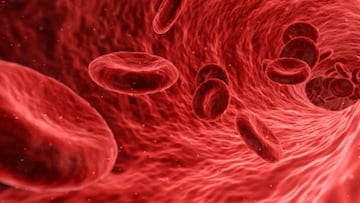A blow to cholesterol: the novel technique that cleans arteries
Spanish and Argentine scientists, in a paper published in the journal 'Science', have demonstrated the importance of galectin-1 against cholesterol.

The protein galectin-1 has become a key ally in the battle against developing vascular diseases. This has been demonstrated through new research by Spanish scientists from the Jiménez Díaz Foundation Institute for Health Research, together with researchers from the National Scientific and Technical Research Council of Argentina.
The study, published in the journal 'Science', has demonstrated the presence of this protein in healthy aortas. In addition to its capacity to prevent the development of plaques in the arteries it staves off the development of atherosclerosis and abdominal aortic aneurysm (AAA). The research, which was carried out on mice, showed that those mice that did not have this protein developed a greater number of plaques, compared to others that did have this protein.
Also see:
- New side effects added to Janssen, Moderna vaccine product info
- Is the Deltacron variant more contagious than Omicron?
- Areas of China return to strict lockdown rules as new case numbers return to 2020 peak
- The five most common side effects of the third dose of Moderna and Pfizer
Galectin-1 prevents absorption of cholesterol by cells
Raquel Roldán-Montero, one of the main authors of this study and researcher at the Jiménez Díaz Foundation - Autonomous University of Madrid, pointed out the importance of the presence of this protein saying "The data suggest that loss of galectin-1 is associated with the development of vascular disease." The scientists verified through in vitro studies how a type of white blood cell that along with performing essential immune system tasks by killing invasive microorganisms removes dead cells, known as macrophages, that are deficient in galectin-1, absorb more cholesterol, while treatment with this protein prevented cholesterol uptake.
Both AAA and atherosclerosis are characterized by the accumulation of cholesterol and inflammation of cells in the aortic wall. The rupture of atherosclerotic plaques, with the consequent release of their contents, can lead to blood clotting and the formation of thrombi that obstruct blood circulation. According to the authors, pathological vascular remodeling is the main cause of the two aforementioned vascular diseases.
The discovery of this protein represents another step forward for science and medicine in the fight against the development of the most serious cardiovascular diseases, such as heart attack or stroke. Currently, the main indicators for controlling risk factors are high cholesterol or blood glucose levels, arterial hypertension and smoking, among others.
Chest pain, shortness of breath, and palpitations. Even if you have no symptoms, you may still be at risk for #HeartDisease 🩺. Learn the potential warning signs and the steps you can take to prevent heart disease: https://t.co/TbygOmzGWB. #HeartHealthy #AmericanHeartMonth pic.twitter.com/IYba1DoNxp
— HHS.gov (@HHSGov) February 23, 2022
Galectin-1, characterized by its anti-inflammatory effect
Another of the most outstanding characteristics of this protein is its anti-inflammatory effect in various forms of chronic inflammation, such as multiple sclerosis.
Related stories
In order to avoid cardiovascular diseases and high cholesterol levels professionals recommend regular physical exercise, limiting the intake of saturated fats, not smoking and a balanced diet.
Cardiovascular diseases are one of the most frequent causes of death in the world, with an average of up to 17.5 million deaths per year. Heart disease is the leading cause of death in the United States, accounting for one in every four deaths each year.

